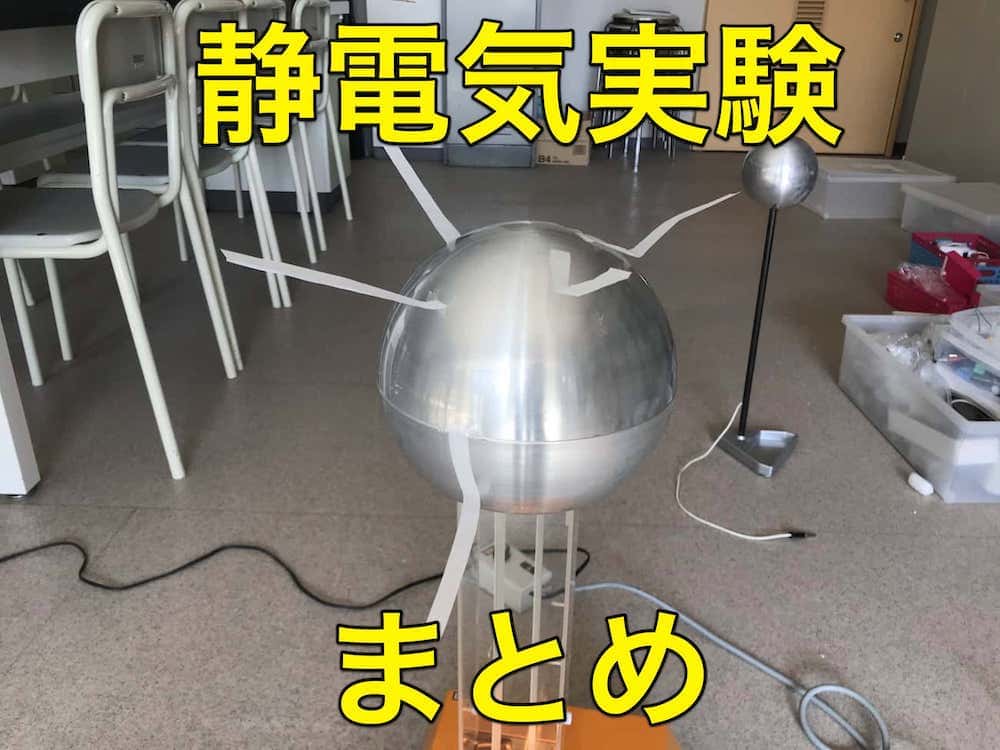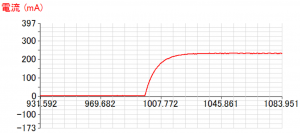The Secret History of the Static ZAP: From 30,000 Volts on Your Doorknob to the Edo Period’s “Hundred People Shock.”
I’m Ken Kuwako, your Science Trainer. Every day is an experiment.
On a dry winter day, the moment you reach for a metal doorknob… ZAP! ⚡ That unpleasant, voice-calling shock is something almost everyone has experienced. What exactly is that tiny spark? And in the Edo period, when its true nature was completely unknown, how did people perceive it, and what kind of thrilling “experiments” did they conduct with it?
This article invites you into the mysterious yet profound world of “Static Electricity.” Let’s have fun learning together, from the basic knowledge of why you get that “ZAP!” to the history of the shocking experiment, the “Hyakunin Odoshi” (Hundred People Shock), in which the famous Hiraga Gennai was involved!
【This article is also available on Podcast.】
Here, for everyone interested in #静電気 (Static Electricity), we’ll introduce the basics of static electricity and the history of the #ライデン瓶 (Leyden Jar), #エレキテル (Elekiter), and the #百人おどし (Hyakunin Odoshi).
Why Does Static Electricity Happen?
Every material is made of “atoms,” which consist of a nucleus containing positively charged “protons” (+) and negatively charged “electrons” (-) orbiting around it. Normally, the amounts of positive and negative charges are balanced, making the atom electrically neutral (zero charge). However, when materials rub against each other or are otherwise supplied with energy, electrons can escape from the material.
The “ease with which electrons escape” differs depending on the substance. In the world of science, the minimum energy required to make a single electron jump out is called the “Work Function (W[J]).”
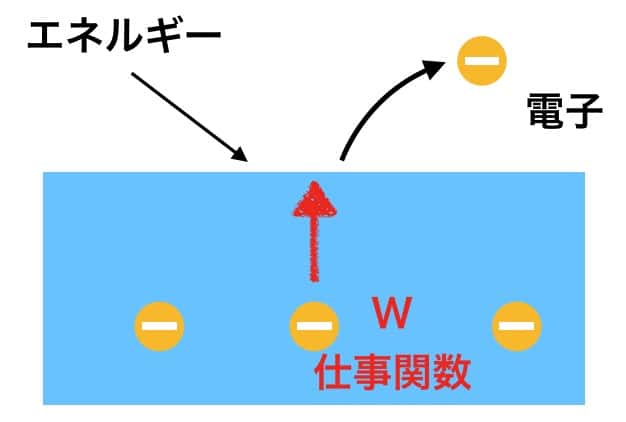
Figure: Work Function
The Work Function (W) varies widely across different materials.

Figure: Material and Work Function
While this sounds complicated, it simply means that materials with a small Work Function are more likely to let go of their electrons (or have electrons escape easily). Conversely, materials with a large Work Function tend to hold onto their electrons tightly, making them harder to escape.

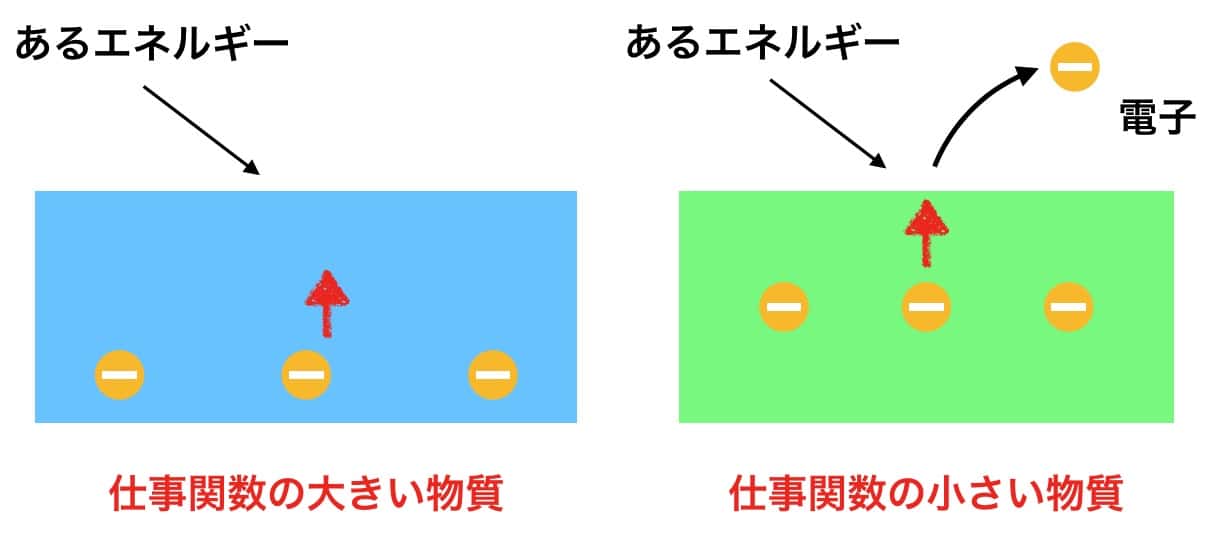
Figure: Material and Work Function when the same energy is applied
When a material that easily loses electrons (small Work Function) and a material that easily gains electrons (large Work Function) rub against each other, electrons move from the former to the latter. (To be precise, movement occurs just by contact—called contact electrification—but rubbing increases the contact area, moving more electrons).

Figure: Electron Transfer Between Materials
This upsets the balance of positive and negative charges. The material that lost electrons (negative charge) becomes positively charged, and the material that gained electrons becomes negatively charged. This state of electrical imbalance is called “electrification” or “charging,” and this imbalance is the true identity of static electricity.
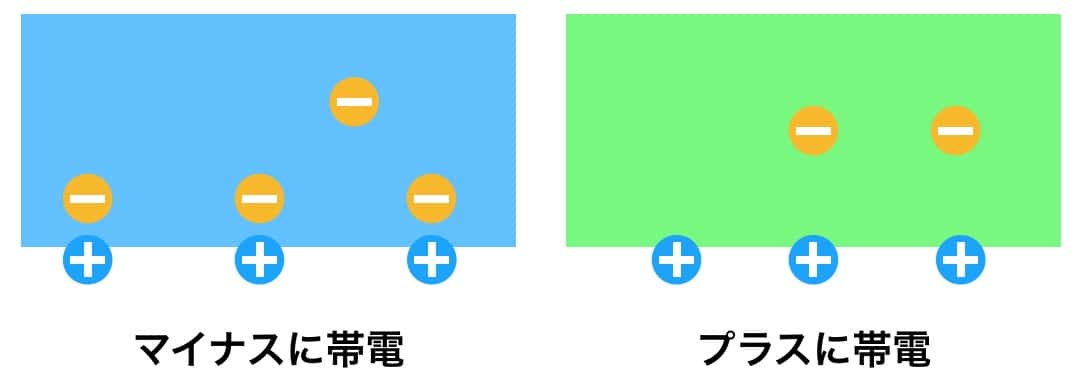
Figure: Material and Electrification
※1 The phenomenon of charging by friction is known to be complex, involving not only contact electrification but also effects from pressure and heat. Click here for more details.
The list that arranges materials according to whether they tend to become positively or negatively charged is called the #TriboelectricSeries.
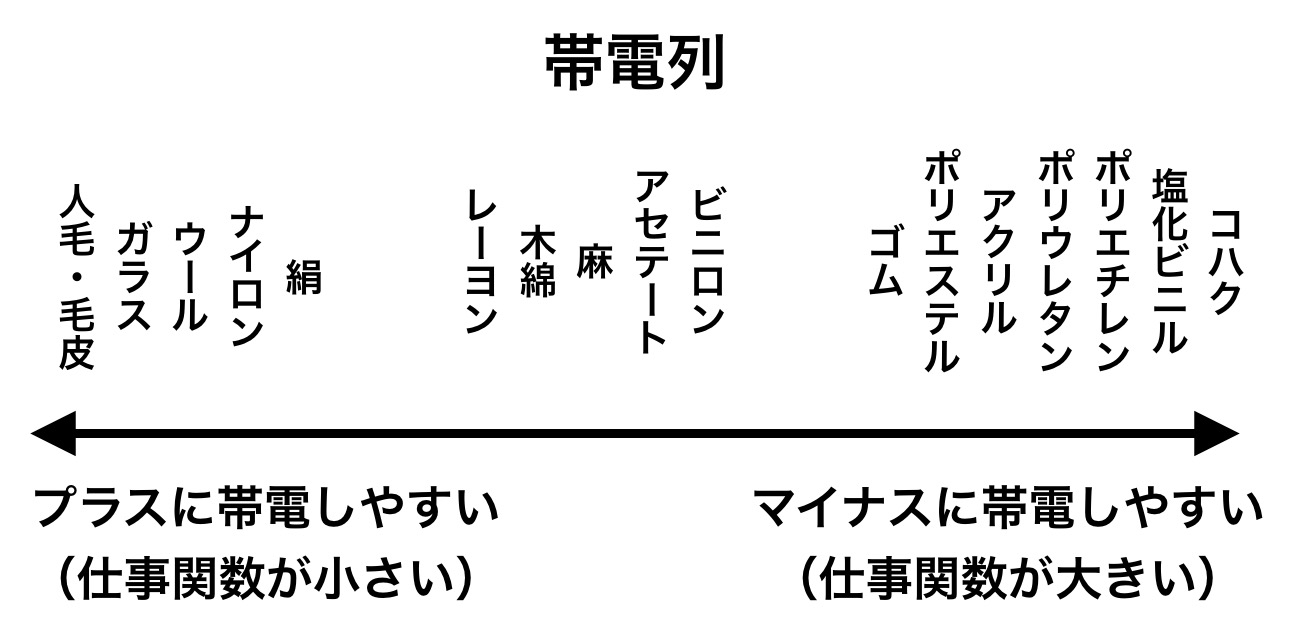
In this chart, rubbing two materials that are far apart will create a stronger charge. For example, rubbing “Nylon” (on the left) and “Polyester” (on the right) shows that Nylon tends to become positive, and Polyester tends to become negative.
Electricity also has a crucial property: “Like charges (plus & plus, minus & minus) repel, and opposite charges (plus & minus) attract.”
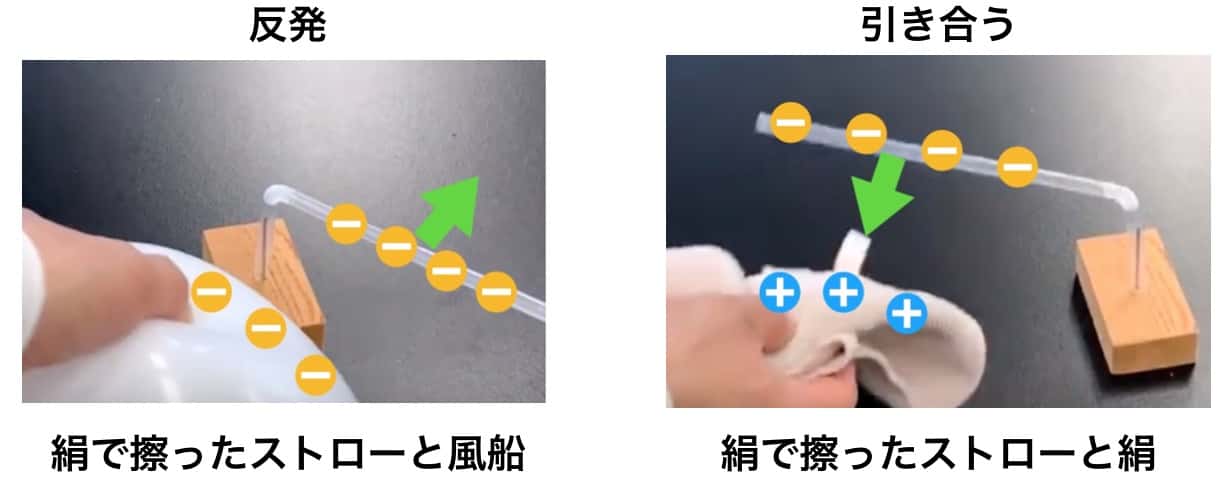
Figure: Types of Static Electricity
Even during our daily lives, we unknowingly become charged through friction—like clothes rubbing against each other (e.g., wool and acrylic) or friction between our feet and the carpet. In high-humidity conditions like summer, the accumulated charge naturally escapes through the moisture (water vapor) in the air. However, in the dry winter air, it’s harder for the electricity to escape, allowing static charge to build up on our bodies. Furthermore, modern people often wear rubber-soled shoes; since rubber is an “insulator” that does not conduct electricity easily, it prevents the charge from escaping to the ground, making it even easier for static electricity to accumulate on us.
Why Does the “ZAP!” Hurt?
Let’s assume a large amount of static electricity, say negative charge, has built up on your body. When you reach out to touch a metal doorknob with that hand…

Figure: Reaching for a Doorknob
First, the electrons (negative) inside the doorknob (metal) are repelled by the negative charge on your hand and move away to the far side of the doorknob. As a result, the surface of the doorknob closest to your hand temporarily becomes more positively charged (this is called electrostatic induction).
Next, your body’s electrons (negative charge) are attracted by the doorknob’s positive charge, causing them to gather at your fingertip. 
Figure: Charge Accumulating on the Fingertip
As you move your hand closer, when the accumulated charge (or the electric field, in technical terms) between the doorknob and your hand exceeds a critical limit—specifically, more than 3 million Volts per meter (or 30,000 Volts per centimeter!)—electrons jump out from your fingertip into the air and rush toward the doorknob.

Figure: Electron Transfer
At this moment, the electrons violently collide with air molecules, knocking electrons out of those molecules as well. This creates an instantaneous avalanche of electrons released from the finger. This is the phenomenon known as “Discharge.”

Figure: Discharge Phenomenon
This discharge creates the “ZAP!” sound, and the electric current flowing through your body causes your muscles to contract sharply, which is the pain you feel.
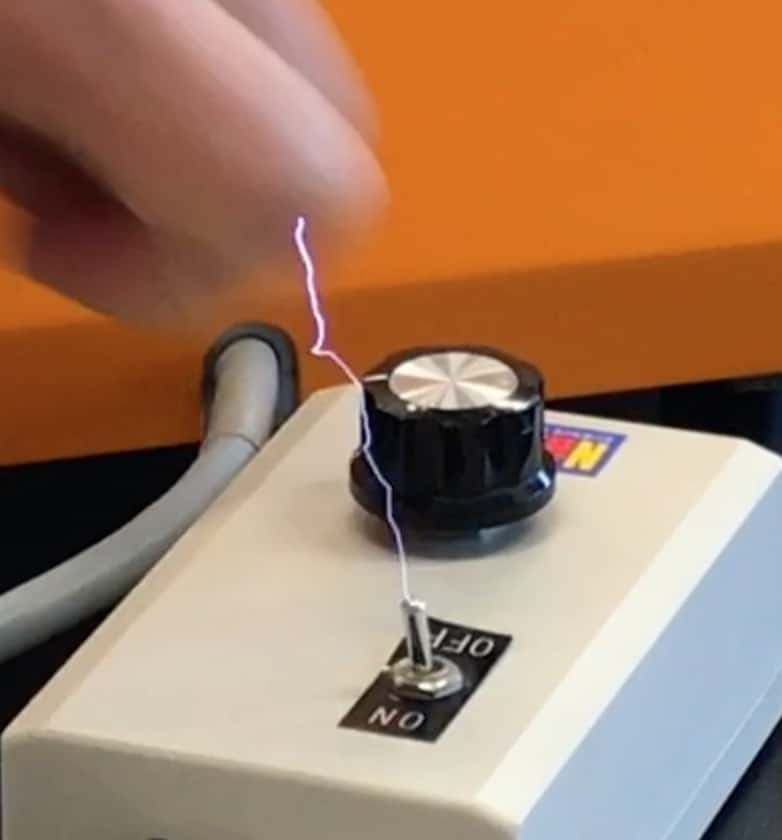
This image shows discharge when touching a light switch after accumulating static electricity. Discharge over this distance is thought to be around 100,000 Volts.
Incidentally, the “ZAP!” sound is an acoustic shockwave (pressure wave) that occurs because the electric current (the flow of electrons) instantly and intensely heats the air, causing it to rapidly expand—the same principle behind the rumble of thunder. The visible spark is said to be energy being released as light when the knocked-out air ions recombine with electrons.
The pain you feel from a doorknob is due to the electricity flowing through your nerves and contracting your muscles. While the voltage is extremely high, the amount of current (the number of electrical particles) is only a tiny fraction, so it does not cause serious damage to the body.

Figure: Ryuji Tanaka, Kenji Ichikawa, “Industrial Safety Research Institute Safety Data RIIS-SD-70-1” (Research Institute of Industrial Safety, Ministry of Labour)
In contrast, while household outlets have a much lower voltage of 100V than static electricity, touching a live wire from an electrical leak can be life-threatening because a very large current flows continuously. Remember the difference: static electricity is “High Voltage, Low Current,” and an outlet is “Low Voltage, High Current.”
To prevent the discomfort of this sudden discharge, before touching a metal object like a doorknob, it is effective to first touch something that conducts electricity poorly (but still a little), like a wall or wood, to slowly let the accumulated charge escape. Also, when discharging, avoid touching with a sharp point like a fingertip. Instead, press your entire palm flat against the object; this prevents the electricity from concentrating at a single point, making discharge less likely to occur. If you are sensitive to static electricity, give these tips a try!
How Many Volts Is That Static ZAP?
What is the voltage of that unpleasant “ZAP!” we feel when touching a doorknob? According to “Electromagnetic Phenomenon Treatise” (written by Setsuzo Takeyama), the threshold for discharge in the air is an astonishing 3 million Volts per meter.
If a discharge occurs when your finger is about 1 centimeter away from the doorknob, the voltage is approximately 30,000 Volts. Even if the spark happens when your fingertip is only 3 mm away, it’s still about 10,000 Volts. An everyday tiny discharge of about 1 mm means you’re being hit with roughly 3,000 Volts.
It’s important to know that while these figures vary greatly depending on the shape of the doorknob and the day’s humidity, static electricity is fundamentally accumulated on our own bodies through friction, not on the object like the doorknob. The doorknob is innocent!
Furthermore, lightning that occurs in nature is slightly different from this kind of spark discharge and is known to occur in a weaker electric field (around 200,000 V per meter). You can find more information here.
The History of the Leyden Jar, Elekiter, and Hyakunin Odoshi
While we now know that “static electricity” is the movement of electrons, to people in the past, it was truly a “mysterious force.”
During the Edo period, the man who astonished people with this strange power was none other than the famous “Leonardo da Vinci of Edo,” #HiragaGennai. Later, the one who took Gennai’s device and explained the scientific experiment—the “Hyakunin Odoshi”—was #HashimotoSokichi, who is considered the father of electrical studies in Japan.
In the era when they were active, the study of “electricity” was booming in Europe. The catalysts for this boom were the Leyden Jar and the Elekiter.
The Invention of the Jar that “Stores” Electricity
The Leyden Jar: Invented in 1746 by Dutch scientist Pieter van Musschenbroek at the University of Leiden, this was a device capable of storing electric charge. It was a groundbreaking invention because, up until then, generating electricity was possible, but accumulating it was difficult. The Leyden Jar successfully contained the charge within a bottle. Its mechanism is fundamentally the same as a modern “capacitor,” with a simple structure of metal foil pasted on the inner and outer surfaces of a glass jar. Instructions for making a DIY version are summarized here.
The Machine that “Creates” Electricity
The Elekiter: This device, also invented in the Netherlands, generates static electricity through friction and stores it in a Leyden Jar inside. When a handle is cranked, a glass disk or similar component rotates, creating friction and generating static electricity. It became famous in Japan when Hiraga Gennai repaired and reproduced a broken Elekiter.
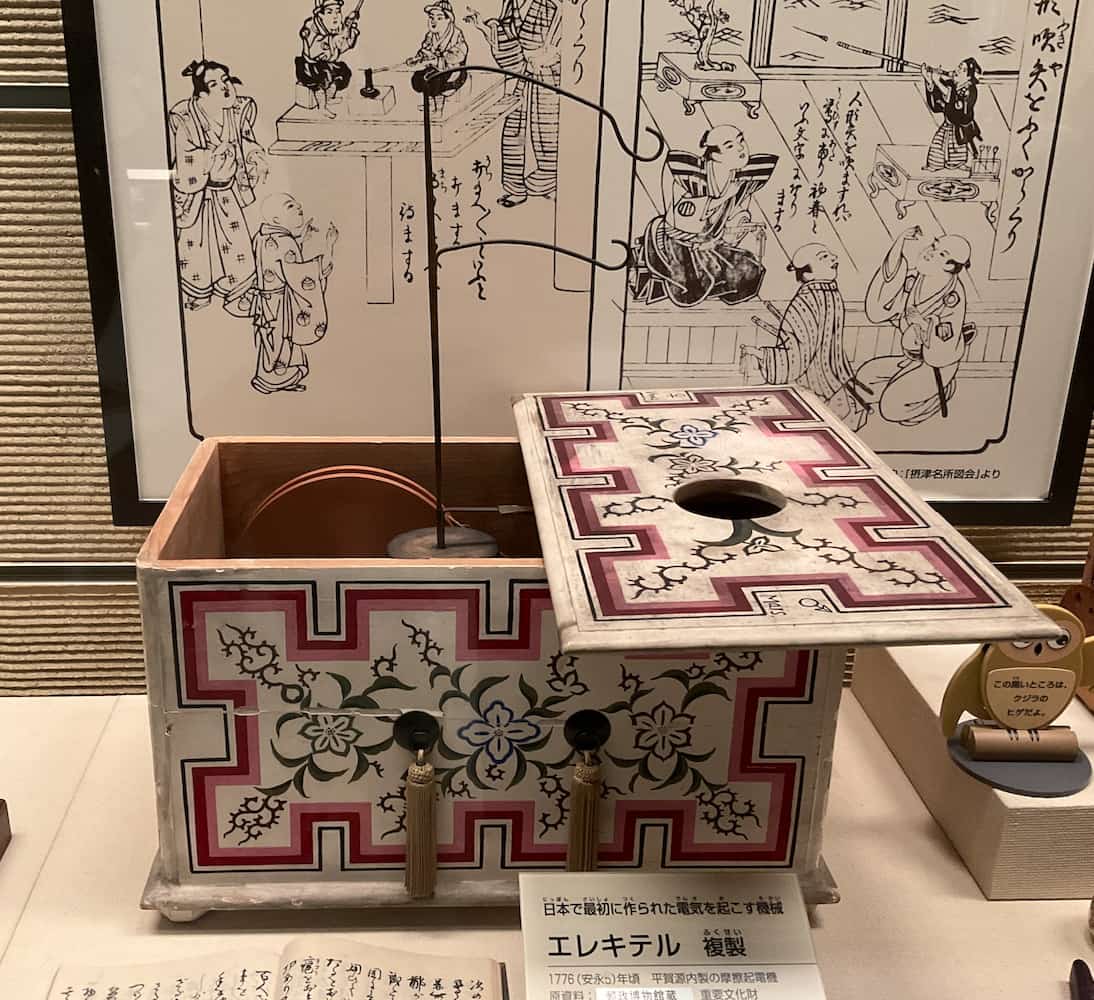
Replica of the Elekiter exhibited at the National Museum of Nature and Science
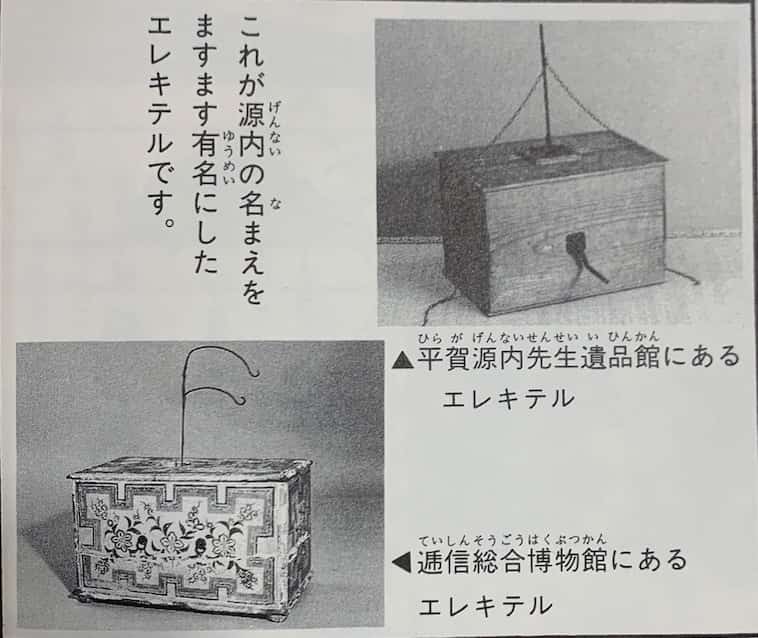
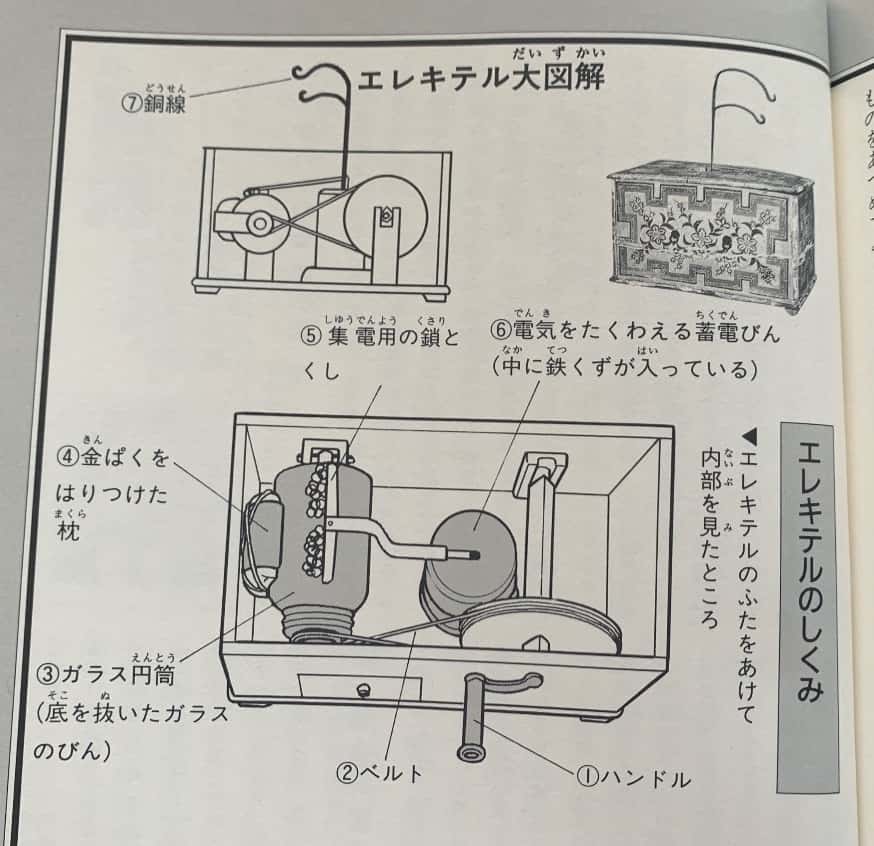
Quoted from “Japanese Biography: Hiraga Gennai” (Shueisha)
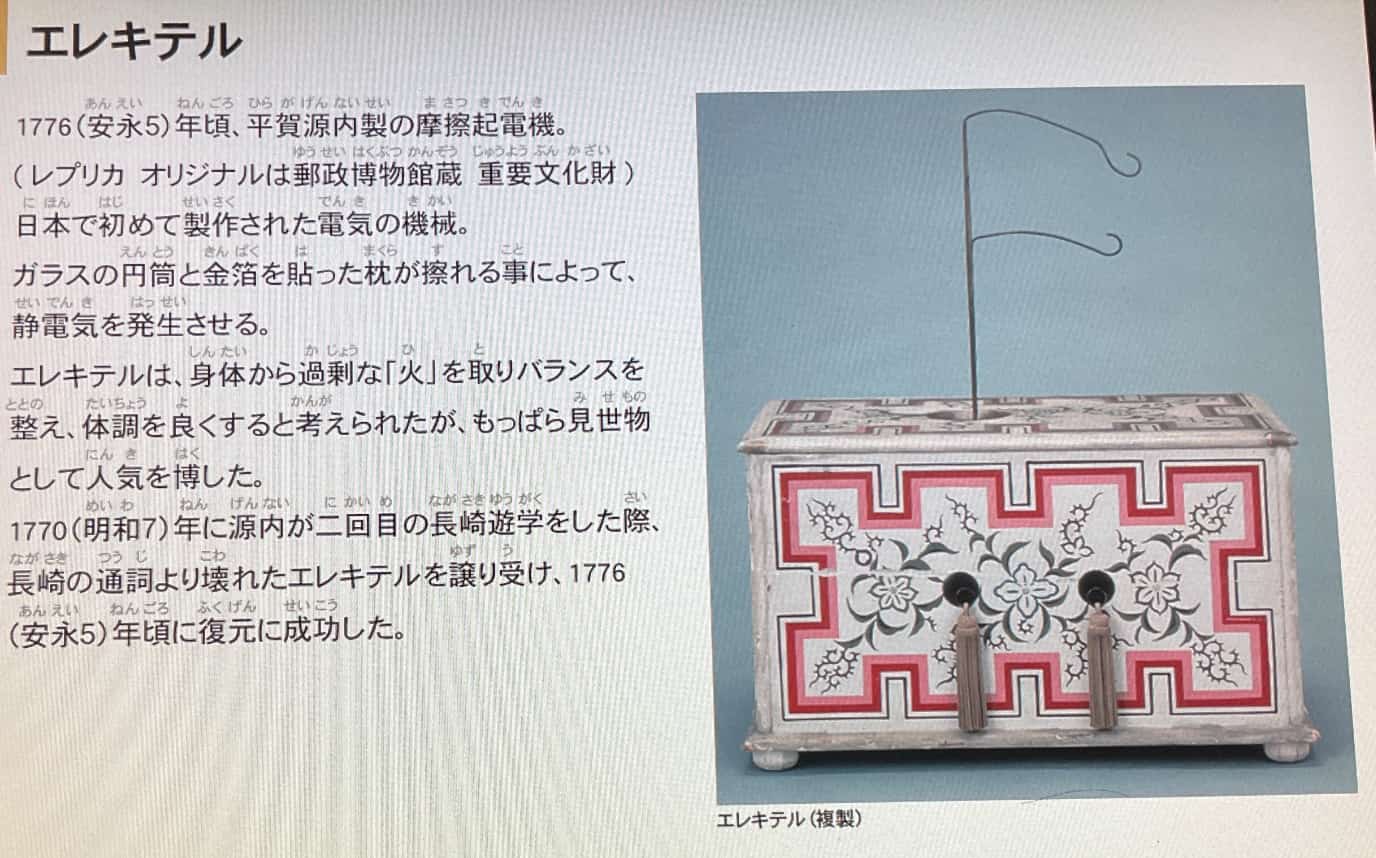
From the National Museum of Nature and Science exhibit description
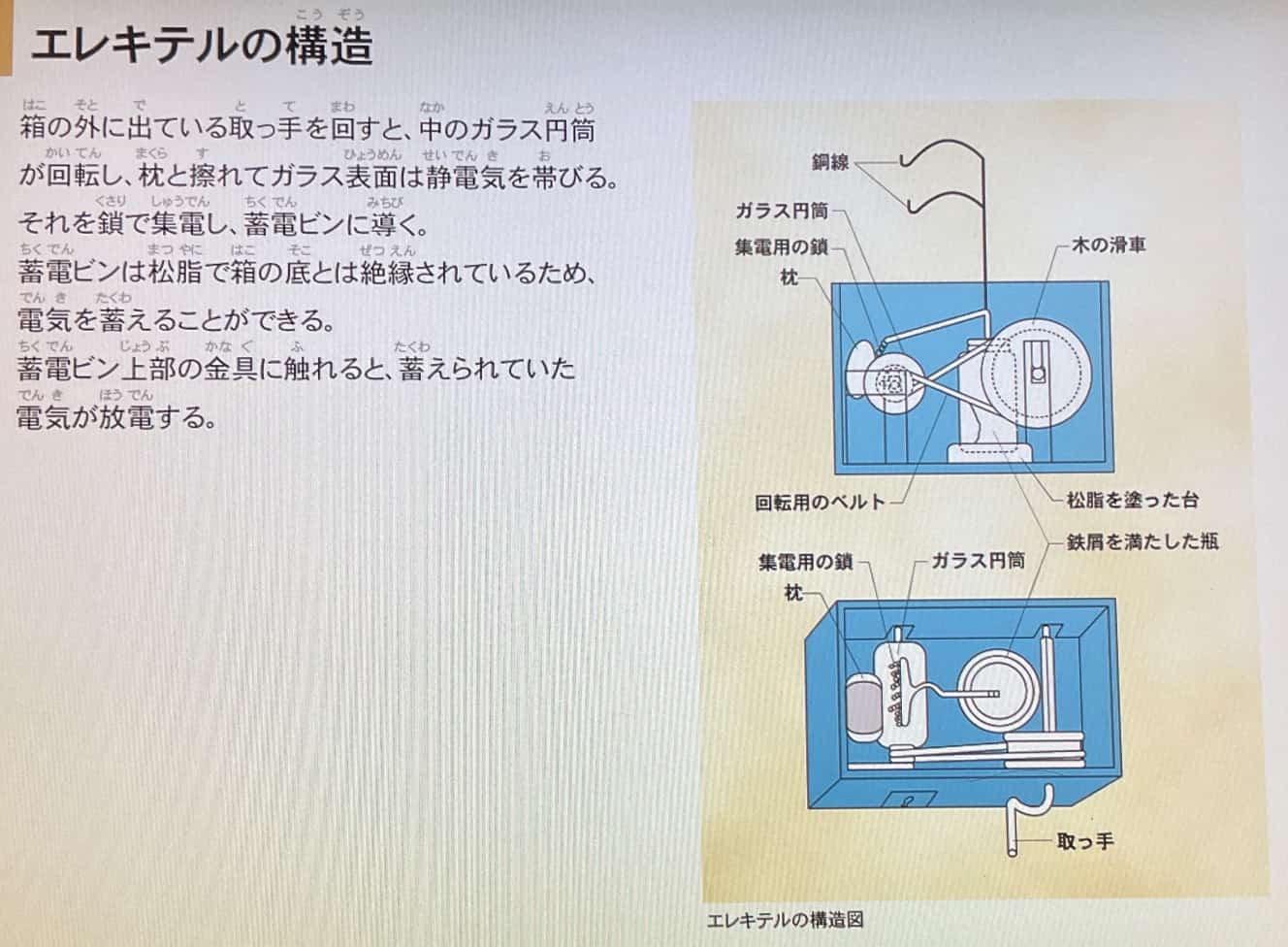
From the National Museum of Nature and Science exhibit description
The Shocking Edo Experiment: “Hyakunin Odoshi”
The Hyakunin Odoshi (Hundred People Shock): This experiment was performed using the Elekiter and the Leyden Jar. It was a rather daring public demonstration, even by today’s standards: a group of people joined hands in a circle, and the electricity stored in the Leyden Jar was instantly discharged through them.

Figure quoted from “Oranda Shisei Elekiter Kyūrigen” by Hashimoto Sokichi, and “Otona no Kagaku Magazine vol 22” (Gakken) P24, 25

From the National Museum of Nature and Science exhibit description
The man who introduced this experiment was the Dutch scholar, Hashimoto Sokichi. He conducted various electrical experiments using the Elekiter and compiled his findings in a book titled Oranda Shisei Elekiter Kyūrigen (Principles of the Dutch-Made Elekiter).
What’s fascinating is the difference in approach between Hiraga Gennai and Hashimoto Sokichi. Hiraga Gennai was more of an inventor and a producer than a researcher; while he did restore the Elekiter, he mostly introduced it as a “sideshow”—using it as entertainment to surprise the public rather than scientifically investigating its mechanism.
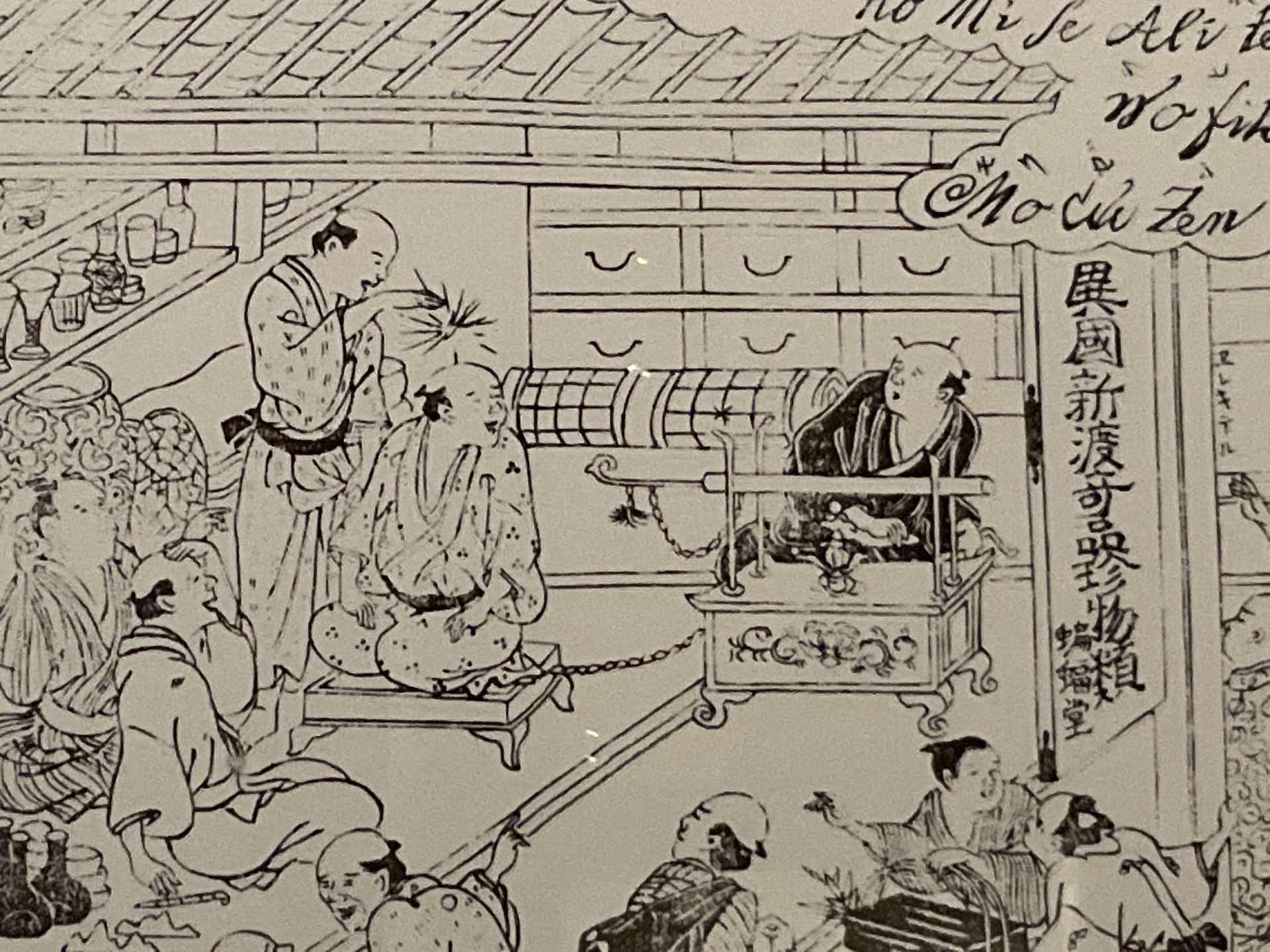
This illustration shows electricity being stored in a person using the Elekiter before discharge.
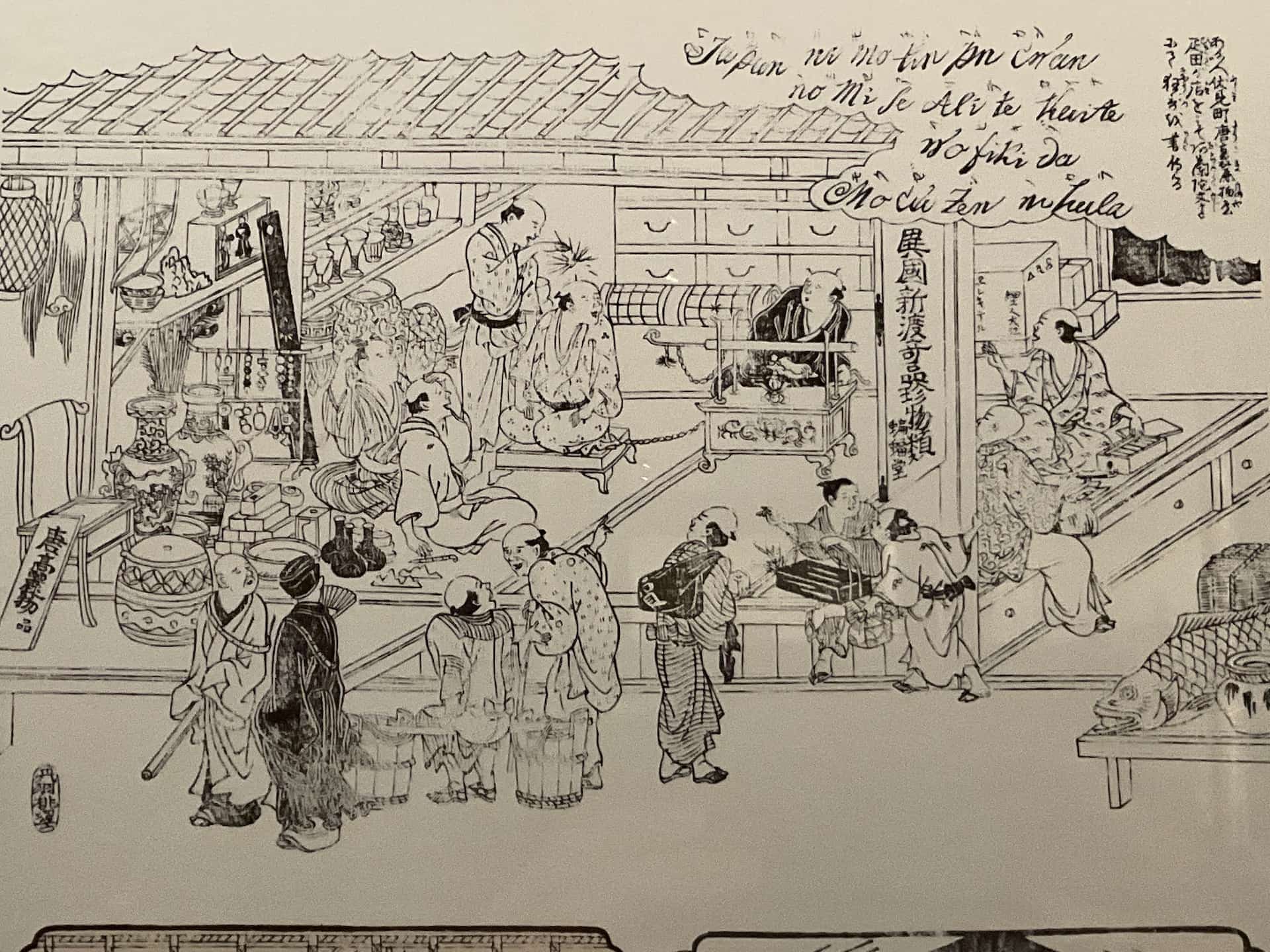
In contrast, Hashimoto Sokichi was a pure researcher. He strongly believed that the phenomenon of electricity should “not be treated as mere magic or a spectacle,” and he conducted experiments like the Hyakunin Odoshi as a scientific pursuit.
Sadly, his efforts were in vain. When he performed the electric shock experiment (likely the Hyakunin Odoshi) on his students at a terakoya (temple school), the parents of the time caused an uproar, claiming, “That’s witchcraft!” As a result, his painstakingly written book, Oranda Shisei Elekiter Kyūrigen, was banned from publication by the Shogunate. This anecdote truly captures the astonishment and confusion of people at the dawn of science.
It is estimated that Hiraga Gennai’s Elekiter produced about 3,000 Volts, while Hashimoto Sokichi’s improved version may have reached about 8,000 Volts. The people of Edo were experiencing a voltage comparable to, or even greater than, the “ZAP!” we feel from a doorknob today!
Fun Experiments with the Static Electricity Generator (Van de Graaff)!
The Elekiter has evolved and been passed down to the modern age. With a machine called the Van de Graaff Generator, you can safely create much more powerful static electricity and perform exciting experiments, like making your hair stand straight up.
We have also published fun experiments using the Van de Graaff. These include experiments conducted on a TV show with celebrities like Suzu Hirose, Ryohei Suzuki, Yasuko, and Osada and Matsuo of Chocolate Planet. Click here for more details.

※ Note: Experiments using a static electricity generator (Van de Graaff) must always be conducted under the supervision of a specialist. Please proceed with caution if you try them. For requests regarding static electricity experiments (workshops, TV supervision/appearances, etc.), please contact us here.
【Feature Article】Static Electricity Experiments You Won’t Be Able to Stop Doing!
Contact and Requests
Bring the wonder and fun of science closer to you! We’ve compiled fun science experiments you can do at home, along with easy-to-understand tips. Feel free to browse around!
The content of this Science Notebook has been published as a book. Find out more here
Learn more about the administrator, Ken Kuwako, here
For all requests (writing, lectures, workshops, TV supervision/appearances, etc.), please contact us here – Article updates are posted on X!
![]() Experimental videos are available on the Science Topics Channel!
Experimental videos are available on the Science Topics Channel!

